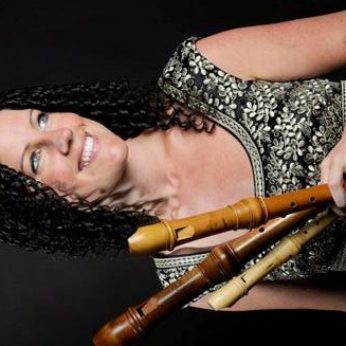Composer: Antonio Vivaldi (b. 1678 - d. 1741)
Performance date: 27/06/2010
Venue: St. Brendan’s Church
Composition Year: 1716
Duration: 00:09:05
Recording Engineer: Anton Timoney, RTÉ lyric fm
Instrumentation: 2vn, va, vc
Instrumentation Category:Small Mixed Ensemble
Instrumentation Other: rec, vn, ob, bn, hpd
Artists:
Kate Hearne -
[recorder/cello]
Malcolm Proud -
[harpsichord]
Bram Van Sambeek -
[bassoon]
Nicolas Daniel -
[oboe]
Bartosz Woroch -
[violin]

Notwithstanding a number of refined and virtuosic appearances, the
recorder, in Baroque times, was thought of as a naïve and simple instrument. It
is therefore no coincidence that Vivaldi chooses this sweet flute, the flauto dolce, to conjure up an
image of the lowly Shepherdess in his joyful and charming chamber concerto, La Pastorella. The recorder is
joined by the violin, oboe, bassoon and harpsichord; a combination that
particularly appealed to Vivaldi.
This work is one of
only four chamber concerti to which Vivaldi gives a descriptive
title, all referring mainly to the mood of the piece, and in many ways similar
to the musical narratives of his Op.8 solo concerti for violin, which include The Four Seasons. Amid this
kaleidoscope of descriptive works, La
Pastorella has the task of
appealing to the Arcadian aesthetic by representing the pastoral idiom, and
from the first note Vivaldi succeeds in drawing his listeners in to a sweetly
stylised rustic world.
Unlike the modern perception of what a concerto should
be, Vivaldi used the word liberally, and for
every conceivable combination of instruments. The one thing these works have in
common is the cyclical three-movement structure, the outer movements always alternating
between solo and tutti, in this case the recorder and bassoon being the solo
instruments of choice. In the largo,
Vivaldi drops the tutti altogether, leaving a bare and beautiful duo, which
demonstrates his abilities as perhaps one of the most proficient melody writers
of his time.
Copyright © 2024 West Cork Music. All rights reserved.
Designed and developed by Matrix Internet